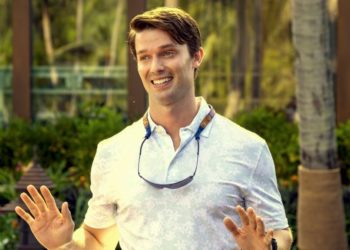Tesla began limited operations of a self-driving taxi service Sunday in Austin, Texas, the first step in a rollout that Elon Musk, the company’s chief executive, has said will make autonomous ride-hailing ubiquitous while bringing in hundreds of billions of dollars of revenue.
At its start, the service, which Tesla calls Robotaxi, will be available only to select guests, and the vehicles will be confined to certain streets. Safety monitors will ride in the front passenger seats, and the vehicles may not operate in bad weather, Tesla has told people who have received invitations to use the service.
“As an Early Access rider, you will be among the first to use our new Robotaxi app and experience an autonomous ride within our geofenced area in Austin,” read an invitation posted on X Friday by Sawyer Merritt, a Tesla investor who comments frequently on the company.
Tesla’s $1 trillion stock market valuation rests largely on promises by Mr. Musk that the company will be able to use artificial intelligence to allow its electric cars to drive autonomously pretty much anywhere there are roads. The Austin project has attracted feverish attention from investors, analysts and supporters of Tesla. The limited rollout will provide the first indications of whether Tesla’s technology can match Mr. Musk’s ambitions.
Tesla still has a long way to go, some analysts said.
“So far, this launch lags significantly behind the company’s promise and what competitors have already delivered,” Paul Miller, a principal analyst at Forrester Research, said in a statement.
The Robotaxi initiative has taken on added importance as sales of Tesla cars have slumped around the world in recent months.
The company said in April that it would begin producing a more affordable car model by the end of June, helping to revive sales. But with only a few days left in the month, Tesla has not shown a prototype of the vehicle or started taking orders.
Mr. Musk has told investors that people who already own Teslas will be able to upgrade the cars so that they can function as self-driving taxis. The vehicles would be able to roam the streets earning money while the owners slept, worked or played video games.
Rivals like Waymo, which already has commercial operations in Austin, do not operate that way. These companies have carefully mapped areas they operate in and use specially modified vehicles they own.
Tesla also plans to sell a two-door car it calls the Cybercab. That vehicle has no steering wheel and is designed to operate primarily as a self-driving taxi. The limited service that began in Austin on Sunday used Model Y sport utility vehicles that appeared identical to those sold to consumers, although they contain more advanced software.
Mr. Musk’s vision faces plenty of roadblocks, including regulatory hurdles, political opposition and well-financed competition.
Waymo, owned by the parent company of Google, provides 250,000 paid rides a week to customers in Austin, Phoenix, Los Angeles and the San Francisco Bay Area. Waymo also plans to offer service in Atlanta, Miami and Washington in the coming months. Last week, the company said it would also seek a change in New York law to allow driverless taxi services in New York City.
At least three other companies — Zoox, owned by Amazon; Volkswagen; and Avride, a start-up that is working with Hyundai — are testing autonomous vehicles in Austin, though they do not yet offer rides to the public.
The National Highway Traffic Safety Administration is investigating whether Tesla’s technology, which depends primarily on cameras, is prone to failure when visibility is poor. Waymo, Zoox, Volkswagen and others pair cameras with radar and laser-based sensors, an approach that some experts say is safer than relying only on cameras, which do not work well in certain conditions.
Tesla’s Robotaxi service could also draw the same hostility that has been directed at the company’s cars because of Mr. Musk’s support for President Trump and right-wing causes. One reason Tesla’s sales have declined is that Mr. Musk’s political activities have offended the liberal and independent voters who are more likely to buy electric cars than conservatives.
The company, which is based in Austin, has run into opposition even in Texas, which is generally accommodating to autonomous vehicles. On Wednesday, seven Texas state legislators, all Democrats, asked the company to delay the start of the Robotaxi until new state regulations take effect.
A delay “would be in the best interest of both public safety and building public trust in Tesla’s operations,” Sarah Eckhardt, a state senator, and six other legislators said in the letter.
The state’s regulation of autonomous vehicles is more permissive than California’s and that of many other places. Tesla has a factory in Austin that employs more than 20,000 people who build Model Ys and Cybertrucks.
Tesla did not respond to a request for comment. Austin’s city government said in a statement that the city had provided the company with maps of school zones and information about police and fire operations.
Mr. Musk has often argued that Teslas using self-driving software are safer than cars driven by humans.
Some analysts believe that Tesla’s Robotaxi has a good chance of succeeding because it has a significant cost advantage over competitors that use multiple types of sensors in their vehicles.
But other analysts doubt that Mr. Musk’s plans are feasible, including his idea of having Tesla owners make their cars available to ferry strangers. “I don’t think a lot of people want to let go of their Teslas,” said Kara Kockelman, a professor of transportation engineering at the University of Texas at Austin who owns a Tesla Model 3.
Jack Ewing covers the auto industry for The Times, with an emphasis on electric vehicles.
The post Tesla Begins Limited Robotaxi Service in Austin appeared first on New York Times.




